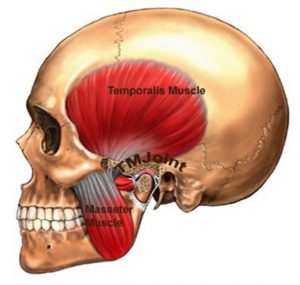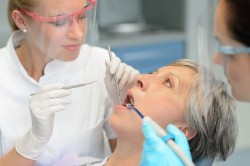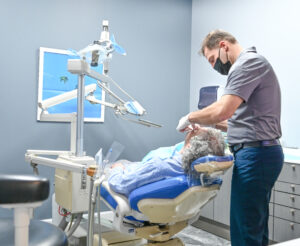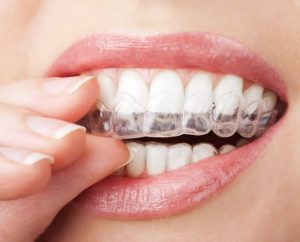Do you often experience jaw pain or hear a clicking sound when you chew or yawn? If so, you might be one of the millions of people affected by temporomandibular joint (TMJ) disorders.
These disorders can cause discomfort, hinder jaw function, and impact your overall quality of life.
In this blog post, we will explore the intricacies of TMJ disorders, delve into their symptoms, causes, diagnosis, and treatment options, as well as discuss preventative measures and when to seek professional help.
Key Takeaways
- Recognize the importance of proper care for TMJ and its prevalence in women aged 20-40.
- Identify symptoms such as jaw pain, difficulty chewing, headaches/migraines & more to seek professional help.
- Implement preventive strategies such as limiting excessive jaw movements & relaxation techniques to reduce risk of TMJ disorders
Understanding TMJ Disorders
The temporomandibular joint, integral to our daily routines, facilitates actions such as speaking, chewing, and yawning. It connects the lower jaw (mandible) to the skull’s temporal bone, ensuring smooth jaw movement. Proper care of our temporomandibular joints is essential for maintaining overall oral health.
However, when something goes awry with the TMJ, it can lead to a myriad of painful and disruptive conditions collectively known as temporomandibular disorders (TMD). These disorders are estimated to affect between 5% and 12% of the adult population, with a higher prevalence in women and people assigned female at birth (AFAB) aged 20 to 40 years old.
The Temporomandibular Joint
The TMJ, also known as jaw joints, is located on each side of the face, just in front of the ears, connecting the lower jawbone to the skull. These complex joints are responsible for controlling jaw movement, allowing us to perform essential activities such as chewing and speaking, with the help of jaw muscles and proper alignment of upper and lower teeth.
The accurate alignment of teeth and jaw, as well as overall oral health, relies on the proper functioning of the temporomandibular joint, tmj. When temporomandibular joint dysfunction or other temporomandibular disorders develop, they can significantly impact these essential joints and their functions.
Types of TMJ Disorders
TMJ disorders encompass over 30 conditions that cause pain and dysfunction in the jaw joint and muscles controlling jaw movement. The National Institute of Dental and Craniofacial Research classifies TMD into three categories: myofascial pain, internal derangement of the joint, and degenerative joint disease.
It is possible for individuals to experience multiple TMD conditions concurrently. Moreover, TMD often coexists with other painful health conditions such as fibromyalgia or irritable bowel syndrome.
Recognizing Symptoms of TMJ Disorders
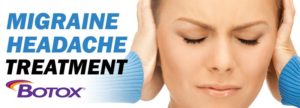 TMJ disorders can manifest in various ways, with symptoms ranging from mild to severe. Common indications of TMD include:
TMJ disorders can manifest in various ways, with symptoms ranging from mild to severe. Common indications of TMD include:
- Jaw pain or tenderness
- Difficulty or discomfort while chewing
- Clicking, popping, or grating sounds in the jaw joint
- Locking of the jaw joint
- Headaches or migraines
- Earaches or ringing in the ears
- Facial pain or swelling
- Neck and shoulder pain
Experiencing clicking or popping sounds in the TMJs without any pain is quite common and doesn’t necessarily indicate a TMJ disorder.
If you are experiencing persistent TMJ pain or any of the symptoms mentioned above, it is highly recommended that you seek the advice of a dentist or healthcare provider for an accurate diagnosis. Early diagnosis and intervention can help prevent further complications and improve your quality of life.
Identifying Causes of TMJ Disorders
The exact cause of TMJ disorders is often challenging to pinpoint, as they can result from a variety of factors or a combination thereof. Some potential causes and risk factors for TMJ disorders include:
- Genetic predisposition
- Psychological stressors
- Life stressors
- One’s perception of pain
- Injuries to the jaw or temporomandibular joint
In addition, these TMDs can have a lasting and debilitating effect on daily life, often presenting various tmd symptoms.
To tailor an appropriate treatment plan and alleviate your symptoms, understanding the underlying causes of your TMJ disorder is necessary. Hence, a healthcare professional should conduct a thorough evaluation to identify the root cause of your condition.
Diagnosing TMJ Disorders
Diagnosing TMJ disorders involves a comprehensive evaluation process. Your healthcare provider will begin with a physical examination, which may include assessing jaw joint pain or tenderness, listening for clicking or popping sounds, and testing the bite and facial muscles. They will also obtain a detailed medical history, asking about the location, intensity, and duration of your pain, as well as whether it is alleviated or exacerbated by any particular activities.
Imaging tests, including X-rays, MRI, or CT scans, might be used to aid in diagnosing TMJ disorders. However, before diagnosing a TMD, your doctor or dentist must consider other conditions, as pain in the mouth, jaw, or face may not always relate to TMDs.
Treating TMJ Disorders: Noninvasive Options
Once diagnosed, a variety of noninvasive treatment options are available for TMJ disorders. These treatments aim to alleviate pain, restore jaw function, and improve overall quality of life.
Noninvasive options include self-care practices, lifestyle modifications, and the use of oral appliances.
Self-Care and Lifestyle Changes
Incorporating self-care strategies and making lifestyle adjustments can significantly help alleviate TMJ disorder symptoms. Some beneficial practices include:
- Consuming soft foods
- Abstaining from chewing gum
- Applying heat or ice packs
- Implementing relaxation techniques to manage stress
- Low dose Ibuprofen or other NSAID
Additionally, behavioral modifications such as reducing or stopping teeth clenching can help alleviate TMJ disorder symptoms.
Oral Appliances and Physical Therapy
Oral appliances, such as orthopedic appliances or mouthguards, can be worn in the mouth to reduce teeth grinding and help alleviate TMJ pain, which may be associated with oral health disease numbness.
Physical therapy is another noninvasive treatment option that focuses on preserving, enhancing, or restoring movement and physical function. Techniques used in physical therapy for TMJ disorders may include manual therapy, which involves a therapist using their hands to stretch the soft tissues and muscles surrounding the joint.
Treating TMJ Disorders: Invasive Procedures
In some cases, invasive treatment options may be recommended for TMJ disorders. These options include surgical interventions and other medical procedures. Surgery for TMJ disorders is usually considered a last resort, reserved for cases where conservative treatments have proven unsuccessful.
Medical procedures such as prolotherapy and arthrocentesis may also be used to treat TMJ disorders. Prolotherapy involves injecting a solution into the TMJ area to stimulate the body’s natural healing response. Arthrocentesis introduces fluid into the TMJ to help remove scar tissue and inflammatory substances.
Although these procedures can offer relief, discussing the potential risks and benefits with your healthcare provider is crucial before opting for any invasive treatment options.
Prevention Strategies for TMJ Disorders
While it may not be possible to eliminate all risk factors for developing TMJ disorders, there are steps that can be taken to reduce the likelihood of developing this condition. Preventative measures include:
- Limiting excessive jaw movements
- Maintaining good posture
- Employing relaxation techniques to manage stress
- Abstaining from foods that necessitate excessive jaw movement
- Ensuring proper ergonomics
How do you get rid of TMJ in your jaw?
Adopting these habits can not only help prevent the onset of TMJ disorders but also contribute to your overall well-being and quality of life. Proactively taking care of your health and your jaw can help mitigate the risk of TMJ-related issues.
Seeking Professional Help for TMJ Disorders
If you’re experiencing persistent jaw pain or other TMJ symptoms, it’s essential to consult a healthcare professional for an accurate diagnosis and appropriate treatment plan. During the consultation process, your healthcare provider will inquire about your symptoms, medical history, and conduct a physical examination. They may also order imaging tests or refer you to a specialist to ensure a comprehensive evaluation and accurate diagnosis of your TMJ disorder.
Early professional intervention can help address your TMJ disorder symptoms, avert further complications, and enhance your overall quality of life. Don’t let jaw pain restrain you – consult a healthcare provider and manage your TMJ disorder today.
Summary
Temporomandibular joint disorders can be a significant source of discomfort and disruption in daily life, but understanding their causes, symptoms, diagnosis, and treatment options can empower you to take control of your condition. By incorporating preventive measures, seeking professional help from a dentist in rockville md when needed, and exploring various treatment options, you can effectively manage your TMJ disorder and improve your overall quality of life.
Remember, you don’t have to suffer in silence – reach out to a healthcare professional and start your journey toward a pain-free future today.
Frequently Asked Questions
To get rid of TMJ in your jaw, use a mouth guard or occlusal splint to reduce teeth grinding and jaw clenching, try TMJ physiotherapy exercises, use moist heat and cold compresses, massage your jaw muscles, stretch them, limit stress, avoid chewy foods and ditching chewing gum.
What triggers TMJ?
Teeth grinding, or bruxism, is the most common trigger for TMJ. This can happen when you’re awake or asleep and without treatment, it can lead to problems with your teeth, jaw muscles, jaw joints, jaw injuries, arthritis and everyday wear and tear. TMJ can cause a variety of symptoms, including pain, clicking or popping of the jaw, headaches, earaches, and difficulty opening and closing the mouth. It can also lead
Can TMJ go away on its own?
TMJ discomfort typically goes away on its own; however, anyone experiencing constant or repeated episodes of pain or tenderness at the TMJ or in and around the ear should seek an evaluation. Self-care practices may also be effective in easing symptoms if treatment is needed.
What happens if TMJ is left untreated?
Without treatment, TMJ can cause facial muscle swelling, spasms, and uneven muscle development, potentially leading to permanent damage to the bones in the jaw joint. Surgery may be required if TMJ is left untreated.
How do you fix temporomandibular joint dysfunction?
To fix temporomandibular joint dysfunction, try eating soft foods, avoiding chewing gum, cutting food into small pieces, and wearing a mouthguard while you sleep. You can also reduce stress, exercise your jaw, and take notice of bad habits that could be causing symptoms.



